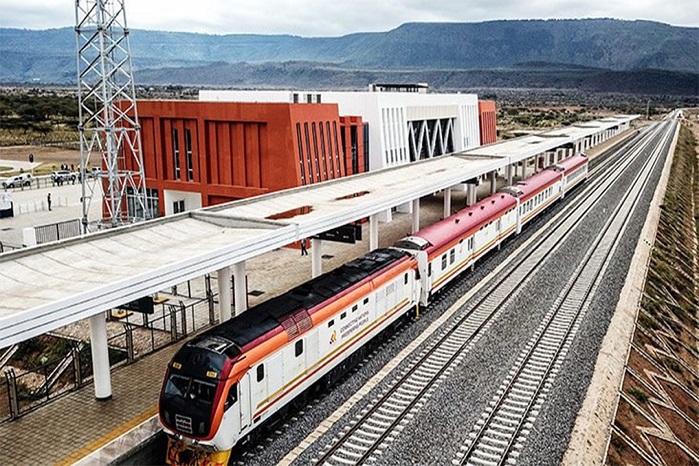
HABARI DAILY I Kampala, Uganda I Turkish construction firm Yapi Merkezi is finally the Uganda Government partner in the construction of the 272 kilometre (169 miles) Standard Gauge Railway (SGR), following penning of an agreement yesterday.
A standard gauge railway (SGR), is a rail line system whose distance between rails ranges from 1,420 mm to 1,460 mm. It’s faster, carries more cargo, and is more stable than the metre gauge rail network whose track gauge is 1,000 mm(1 metre).
The SGR project seeks to develop a modern, integrated, and efficient railway transport system to address both the freight and passenger transportation needs of the country.
The Malaba–Kampala section alone, measuring 273 km with associated train stations and railway yards, is budgeted to cost $2.3b.
Yapi Merkezi will be tasked with construction of the section of railway from Malaba all the way to Kampala city, a move which is expected to boost regional trade, and lead to integration of the East African region.
Perez Wamburu, Uganda’s SGR project coordinator, said the agreement was for the first section of a planned 1,700 km electric rail line.
He said the rail section will connect landlocked Uganda to its neighbors rail network and on to the Indian Ocean seaport of Mombasa.
Bageya Waiswa, Uganda’s works ministry permanent secretary, said the project will increase trade and reduce transport costs.
“Uganda will use its own funds and credit from export credit organisations to finance the project. Construction work will take 48 months to complete once started,” he said during the signing ceremony.
The signing followed the no objection nod by Kiryowa Kiwanuka, the Attorney General.
The Turkish firm is expected to support the government in exploring sources of financing the project.
Uganda in 2014, together with her Northern Corridor Partner States of Kenya, Rwanda and later South Sudan signed a regional SGR Protocol to develop a seamless transport system interconnecting their cities as well as connecting them to the coast of Mombasa.

East African Heads of State launching the SGR construction in Kampala several years ago
Kenya and Uganda set out to develop the SGR System from Mombasa to Kampala via Nairobi, Kisumu and Kenya has since developed their SGR from Mombasa to Nairobi, Nairobi to Naivasha and the line is operational.
The initiative, developed under the auspices of the Northern Corridor Infrastructure Projects Protocol and guided by Cabinet directives, presents a critical step towards unlocking economic growth and fostering a conducive investment environment for local and foreign stakeholders.
“The project aims to enhance transport efficiency by providing a modern, fast, reliable and high capacity railway network which will reduce transit times. It will also lower transport costs and facilitate the movement of goods and passengers,” said a ministry of Works official on condition of anonymity.
He further added that it will promote economic growth by creating seamless connectivity within Uganda and neighboring countries.
“This will stimulate trade, investment and industrial development and facilitate regional integration. This is part of a broader regional integration effort, and will promote closer economic ties and collaboration with regional partners.”
Over 50% of the required land to accommodate the 230km major straight rail and 40km short lines connecting to various factories and warehouses, has been acquired between Malaba and Jinja. Additionally, 80% of Project Affected People (PAPs) have been paid off.
The rail will eventually extend from Malaba to Pakwach, Kampala to Kasese and to the DR Congo border.




